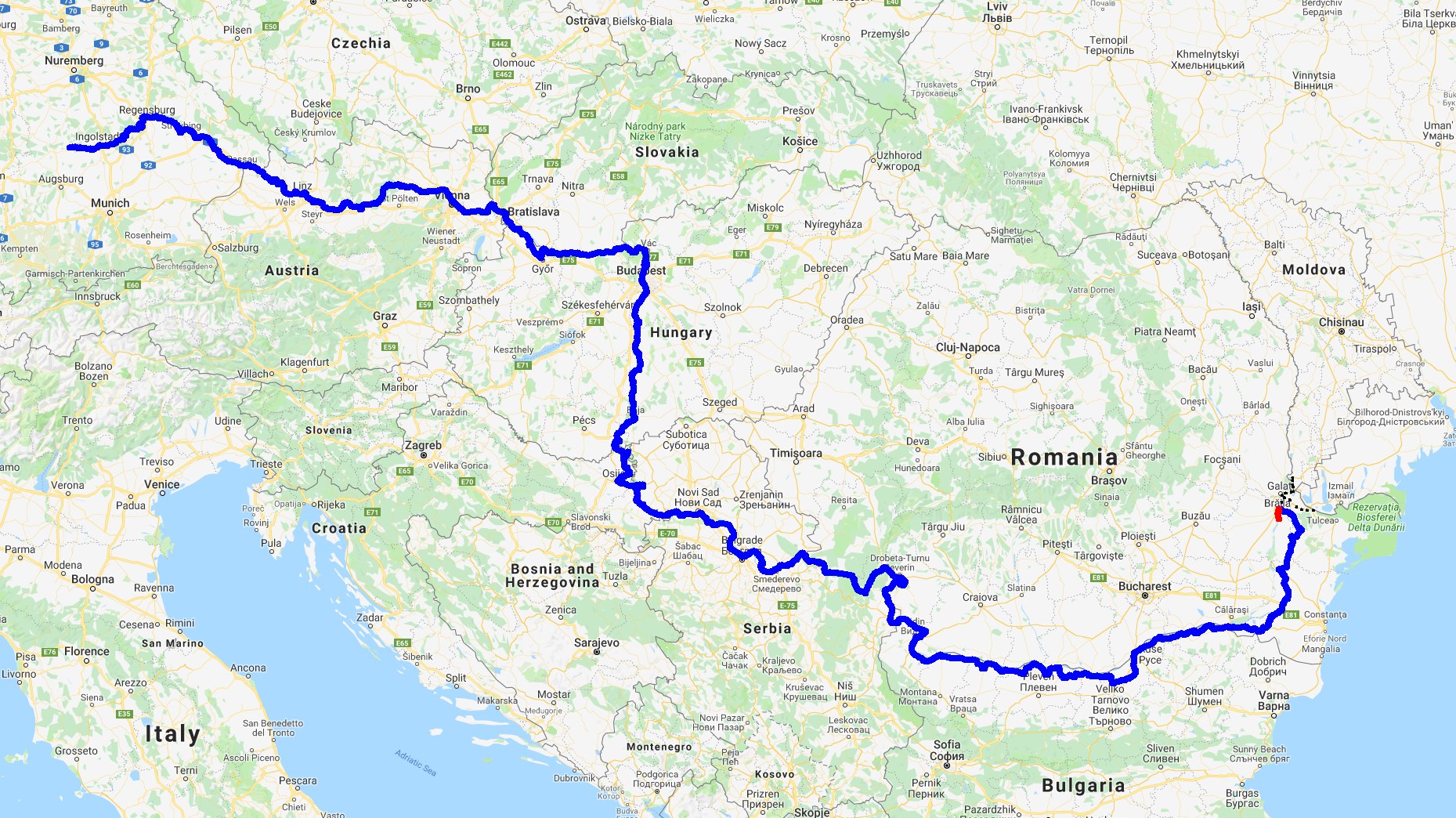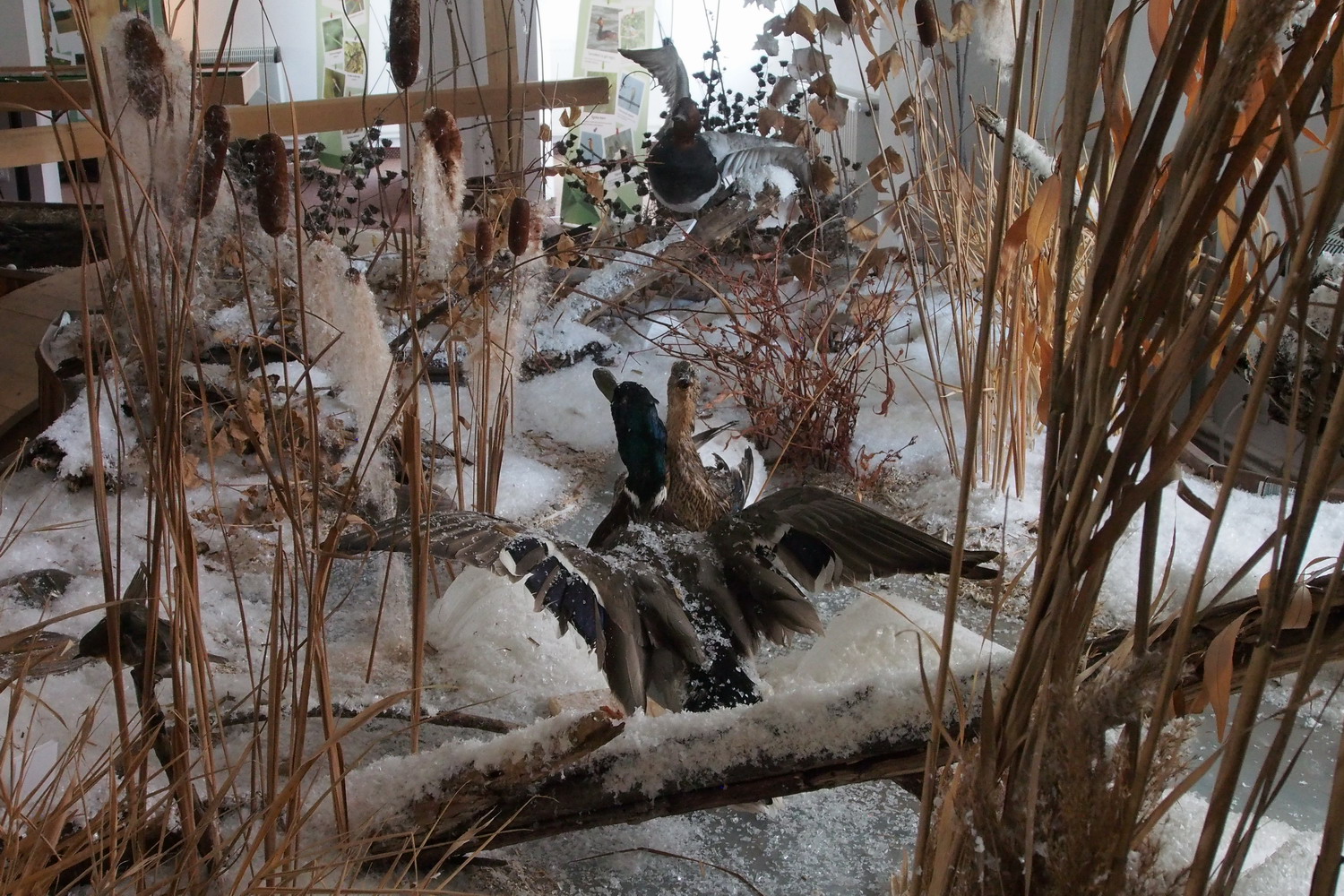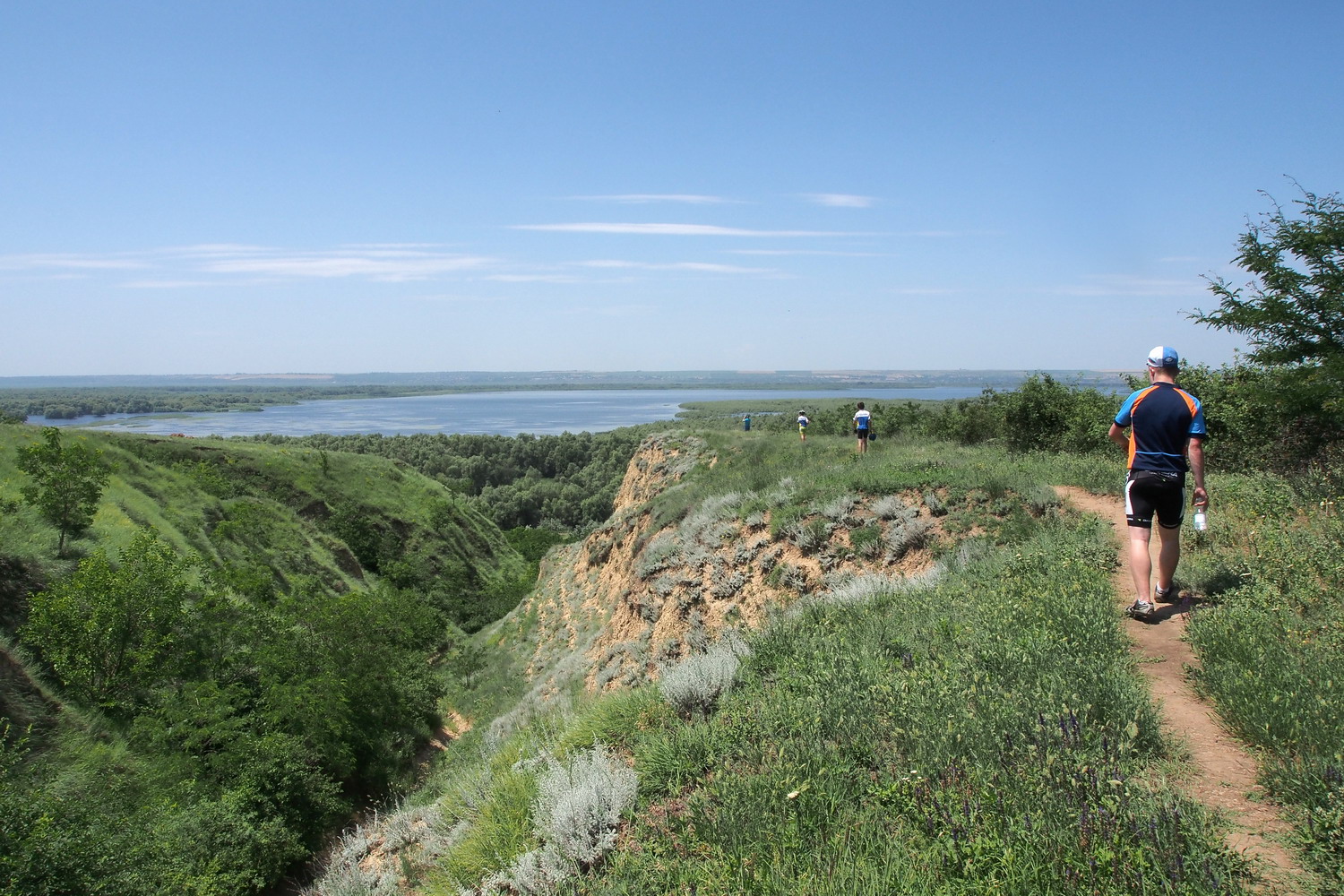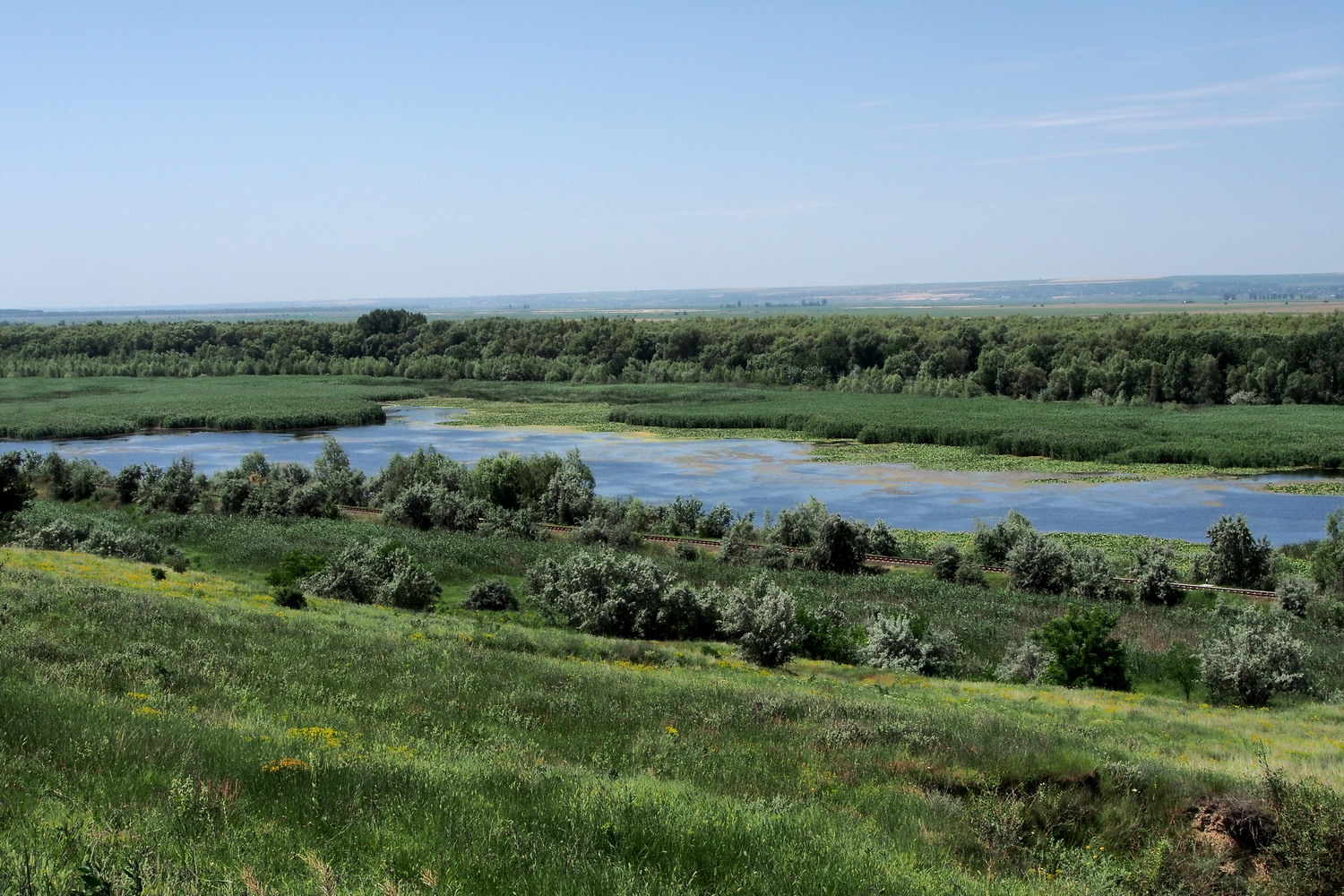|
For the third time in the past five years I cycled up the last of countless hills on the 80 kilometers long road from Galați (yes, this leg is quite strenuous), entered the first streets of Tulcea and then quickly descended through the sunny afternoon to a long, lively, charmed promenade along the Danube bank.
For those who want to ride the full length of the EuroVelo 6, this is not the end - there are couple hundred kilometers left to Constanța. (And one has to bear in mind that the EuroVelo 6 is not only a route along the Danube: it starts on the Atlantic ocean and goes to the Black Sea). But for those who wish exactly to follow the Danube from its spring to its end (and they are the majority), Tulcea is the right address. To be more precise, it is the best address that you can get: the Black Sea shore is still 80 kilometers away, and to go there you will have to take a boat to reach a tiny town Sulina at the end of the central channel in the Delta. Is it disappointing thing after cycling three thousand kilometers along the Danube? Not exactly: from the pier in Sulina you can proudly pedal four kilometers to the warm, white sand on the local beach, and that’s it: there is a small wooden dock there, that will allow you and your bicycle to pose for that perfect photo right above the waters of the Black Sea :)

At the end of the stunning online game. “Online” means on-the-line-of-the-Danube :)
The task was to collect magic keys by touching these identical sculptures of the
sturgeon - the first copy was in the yard of the Danube-Auen National Park,
downstream from Vienna. Alas, I discovered in Tulcea that I didn’t complete the
challenge: somebody told me that there should be one more sculpture somewhere
in Bulgaria. This means that I will have to travel along the Danube again.

The view of Tulcea with my hosts Garbiela Morozov (left) and Gabriela Creţu (right)
A crescendo at the end of a classical music piece is a demanding and dangerous challenge for a composer. It must be no less than a perfect culmination, grandiose enough to meet all of our ruthless expectations after listening to so many tones before it. An ungrateful task, and there is no mercy: the result makes the difference between being a craftsman or an artistic genius. It is this-or-that, there is no compromise.
But the Danube Delta does not care about rules of classical music: its composer was an emotionless (although infinitely persistent) craftsman, but the result is ingenious. That is what Nature does: it blindly and indifferently composes places and then leaves them to us, to adore them and to project into them what we want to see as an imprint of a genius. The Delta does not disappoint in that sense: it is a perfect crescendo at the end of the Danube Concerto.

The Danube Delta is the largest wetland in Europe – it covers an area of approximately 4,300 square kilometers. This gigantic labyrinth of countless lakes, channels, and islands at the end of a 2,860 km-long river is shared between Romania and Ukraine. Much of it (approximately 1,700 square kilometers) is overgrown with reeds and it is the biggest reed bed in Europe (and probably in the world). This natural filter also makes it Europe’s largest water purification system. Since 1991 the Delta has been on the UNESCO World Heritage List, and in 1992 was internationally recognized as a biosphere reserve.
Needless to say, it is full of life. There are 312 important bird species and most of them use the Delta as an important stopover or as a breeding area. There are about 90 fish species, including globally threatened ones (for some of them this is actually the last refuge), and over 1,800 insect species.
The three main arteries of the Delta are its big channels that form the basic water structure of the area. And all of them start from Tulcea: Kilia (Ukrainian), Sfântu-Gheorghe and Sulina branch. Everything else is entwined between these three final branches of the Danube, of which Sfântu-Gheorghe is the oldest one. While slowly making their path through the Delta, they divide into many smaller stream lets which end in wetlands and lakes. The river sediment mixed with the sea sand forms large sand ponds and islands. Some dunes, like those on the Caraorman sand pond, are up to six meters high and look like real desert dunes.
The history of the Sulina branch was shaped by pirates and clogged with shipwrecks, then framed with Turks and Russians who fought a war there. But after the Paris Conference, it was chosen to be a major waterway in the Delta and rectification works lasted from 1862 to 1902. The branch was shortened from 103 km to 70 km by cutting through its six meanders. The town Sulina became Porto Franko of Romania and was chosen in 1952 as a seat of the Danube European Commission (many see it as a forerunner of the European Union).

In the Visitors Center of DDBRA with two Gabrielas and two other
project managers, Mrs. Liliana Ivancenco and Mrs. Alina Codreanu.
I wanted to take home this absolutely stunning map of the Delta,
but for some reason they didn’t allow me to damage the floor.
Romanian partner in the project DanubeParksConnected is the Danube Delta Biosphere Authority (DBRA). So their head office and Visitors Center in the middle of the Danube promenade in Tulcea was my starting address. My hosts and guides for the next two days were The Two Gabrielas :) - Mrs. Gabriela Creţu (Project Manager) and Mrs. Gabriela Morozov (Assistant Manager). They introduced me to the basics:
“We are a public institution, subordinated to the Ministry of Environment and founded in 1990, at the same time when the Danube Delta Biosphere Reserve was established. Our responsibility is administering, protecting and conserving the natural heritage of national interest, as well as physical and geographical units in the Reserve.
This includes establishing (together with state authorities or independently) regulations and controlling navigation and access on the Delta branches and inner lakes for all kinds of vessels. We also support and encourage sustainable use of natural resources. And finally, we offer management, education, training, and other services.
The Visitors Center is a reach source of information on what to see and do in the Delta, and besides other material offers our Guide of the Touristic Routes, which describes 19 aquatic routes.”
The cultural heritage of the Danube Delta is defined by the fascinating mix of Romanian, Gagauz, Lipovan, Moldavan, Russian, Ukrainian, Bulgarian and Turkish people who live their hidden lives scattered around in tiny villages. In recent times tourism appears as a new important economic activity after traditional fishing, hunting, reed harvesting, livestock raising, and modest agriculture.
“The population of the Delta (including Sulina with its 2000-3000 inhabitants) is 11,300. For most of them, life in the Delta is not easy. In winter, most channels are frozen - and they are the only "roads" to Tulcea. Therefore, in such times large icebreakers have first to break the ice and then ships with food and other supplies can follow them. The water level in the channels sometimes can be too low even for small boats, but the problem will be the same: how to reach Tulcea?”
The Reserve covers an area of 580,000 ha. “ The ‘Biosphere reserve’ means there are both nature protection and cultural heritage protection. There are only two or three reserves in Romania with that concept”, says Gabriela Creţu.

The green colour: Letea forest and the largest colony of white pelicans
in Europe. It is strictly protected and entry is allowed only with special
permission and accompanied by rangers.
The highlight of the first day was the four-hours long cruise in the channels north of Tulcea. We went north to the Kilia branch and the border with Ukraine, then turned back.
The minimum water depth for ship navigation is 7 m and must be maintained as such. From the shore of the Black Sea to km 48 of the Sulina channel the distance is calculated in miles because this part is considered to be still a marine zone. That is how a couple of locations along the channel got their names: for example, village Mila 23 (*) is located 23 miles (ca. 37 km) from the mouth of the channel.
(*) By the way, this tiny village that is lost in the endless greenery of the Delta is the birth place of Ivan Patzaichin (originally Russian Dabovan) and the legendary canoeist who won seven Olympic medals (four of them gold) at five consecutive Olympics (1968-1984) plus 22 world championship medals.

In a channel of the Delta

There are several main bird migration routes in Europe, but this is the one that Dalmatian pelicans use: the Delta – Bulgaria – Greece – Ukraine. LIFE project in 2006-2009 had the goal to save colonies of these birds and the area was declared as strictly protected. Two nesting platforms were built there and maintained regularly each year. It is also worth mentioning that half of all pink pelicans in the world breed in the Delta.

Willows prevail in more flooded areas. It is the only sort of the tree along the Danube
that can survive in the water for 2-3 months, by developing additional root network.

The difference in color: leaving a local channel and entering Kilia (Ukrainian) branch.
Is there poaching here? “Of course. Locals do it for centuries, but the worst pests come mostly from Bucharest and use sophisticated technology - modern boats with powerful engines, sonars… That’s why they can make a lot of damage in a short time. In order to prevent the damages, the DDBR has a special department that checks licenses of fishermen sighted on the spot.”
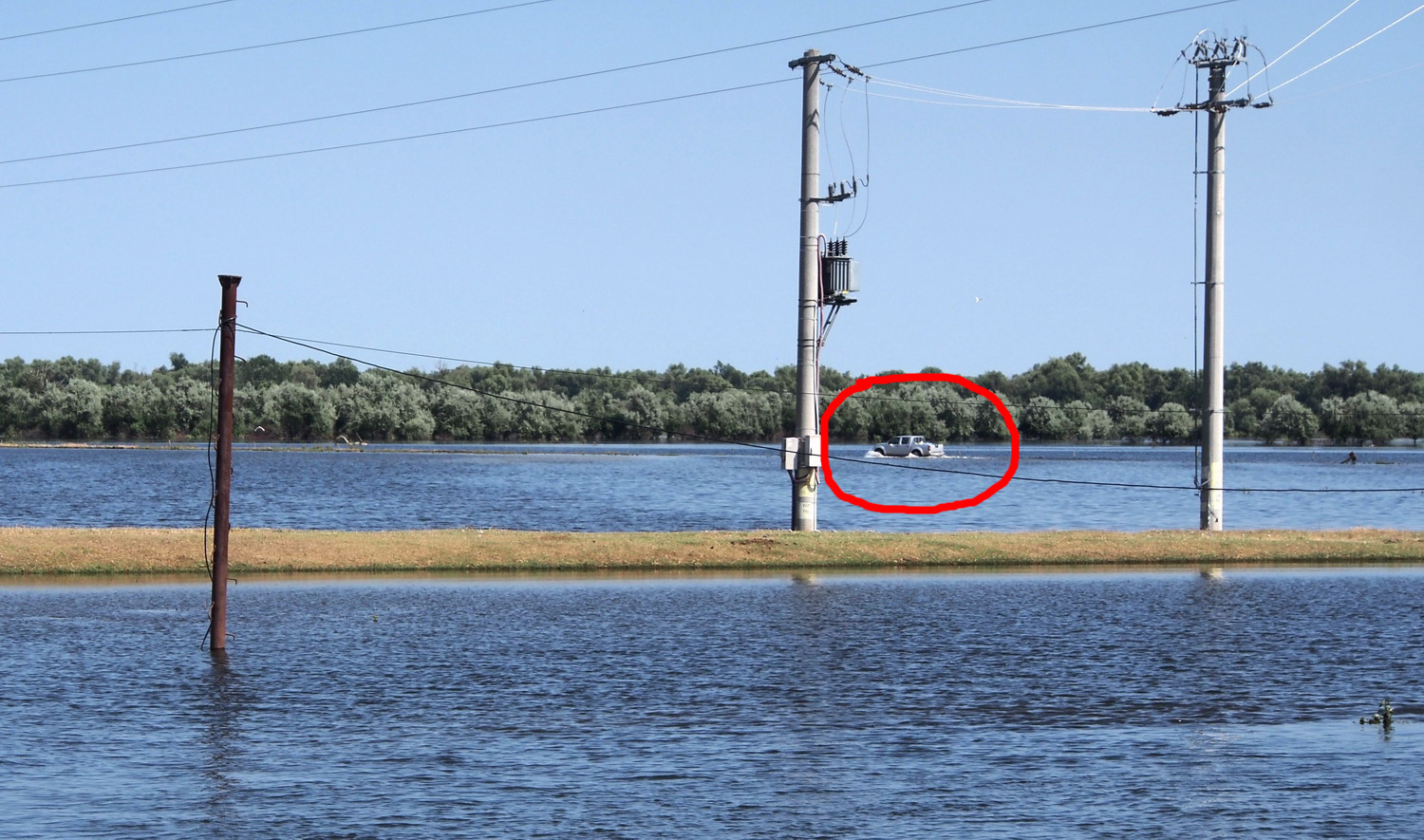
A bit of magic: when the water is high some roads disappear below the surface. But for locals, driving is a matter of self-confidence :)

The traffic from a side street

To better feel the atmosphere in the Delta channels, it is really, really
recommendable to watch movie “Fitzcarraldo” by Werner Herzog.
It takes place in a labyrinth of Amazon channels, but scenes look exactly
like this one. Including one of the main characters – the boat :)
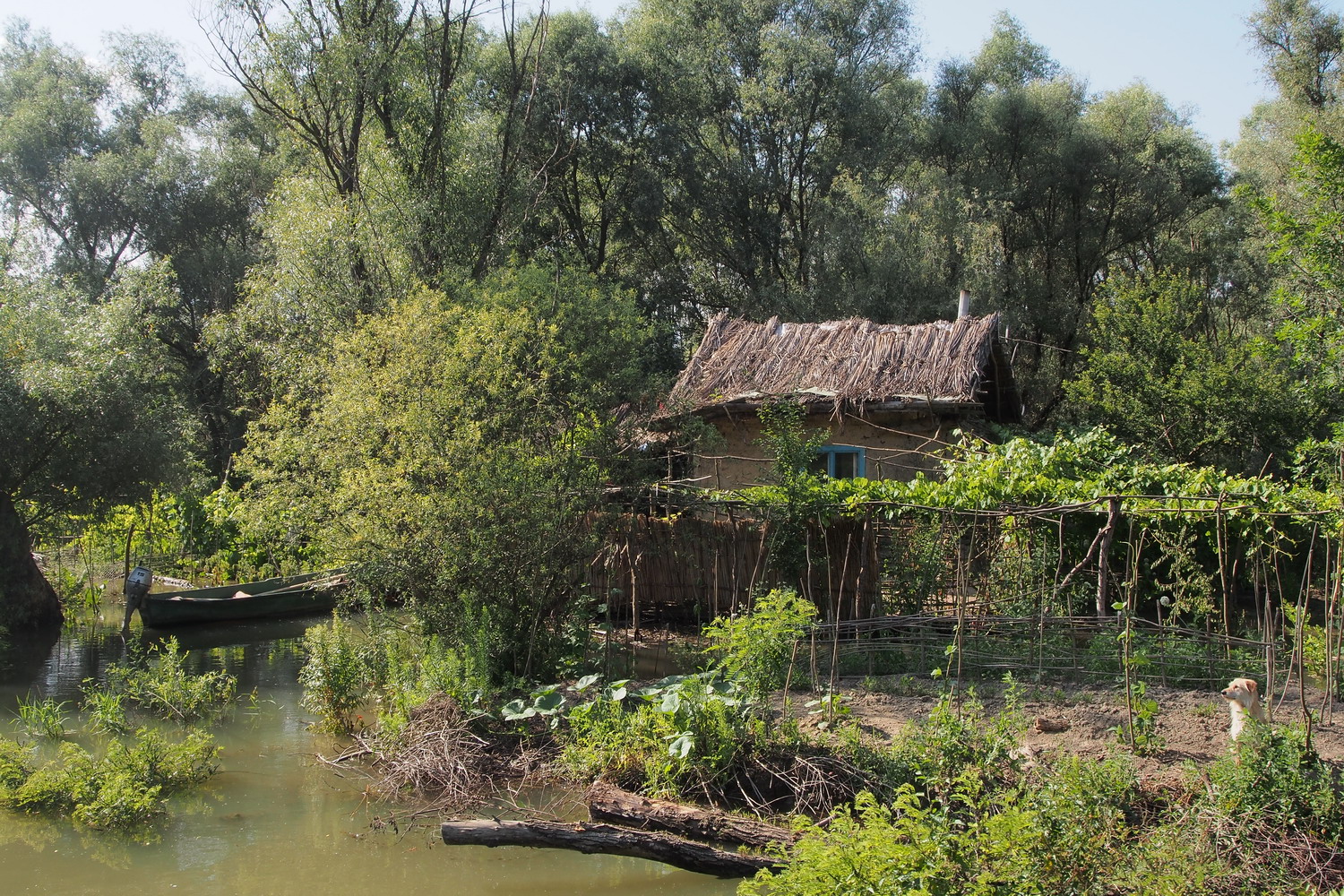
 
The next day the three of us walked to the Monument of independence on the top of the highest hill in Tulcea, to enjoy nice view of the town. Another thing one could see from there was a "mini Delta" on the nearby Lake Sagen. It was revitalized during a Romania-Ukraine trans boundary project which lasted from 2007 to 2009. Gabriela Creţu had a special feeling about it:
“It was the first project in which I participated in the DDBR. I was engaged in the creation of a feasibility study and technical documentation. Tulcea City Hall then started corresponding works, using EU funds for infrastructure and environment development. From 2009 to 2010, unsightly cottages around the lake (some kind of slum) were removed and birds then returned to the lake. We call this complex "mini Delta" because it has characteristics of a model, with its small channels and ponds, just like the real Delta. It receives water through a canal that connects it to the Danube and the water level is regulated by a sluice.
The lake is not open to the public yet. According to the terms of the project, five years after its completion the only allowed activity is monitoring. We will probably make it available to the public after that period but for the time being, some festivals are being held on the perimeter of the lake, and at one spot the Municipality has reconstructed a typical fishing village with several houses.”

Lake Sagen
There are only a few masters (so-called „marangos”) nowadays who can build traditional boats of the Delta fisherman. The last one in Tulcea cooperated with above mentioned Ivan Patzaichin in designing an innovative combination of boat and canoe, “canotka”. They now offer to tourists a small fleet of these boats and organize a race for fishermen, amateurs and children on the Lake Chiuperca on the Day of the Biosphere Reserve (September 1st). They also organize a triathlon and provide camp for visitors during the annual Pelican Festival (what a great name!) of ecological documentary movies.
Below the hill, in the old Lipovans' quarter, there is a very interesting Ecotouristic Museum "3D Delta–Dobruja–Doborogea". Mrs. Christina Dinu, the director at the museum, took us around and revealed to us with many curiosities:
“There are 20 strictly protected areas in the Delta. Letea Forest was the second zone in Romania declared as a protected area, and it is an enigma for biologists because it developed on the sand. (By the way, it is worth mentioning that generally virgin forests of Romania are found in the Tulcea County.)
The Delta was formed over two geological periods and was influenced by two main factors: the Danube and the horizontal currents of the Black Sea. One result of that is also that we have here our own version of the Great Barrier Reef: it is a Sand belt, off the Delta coast.
And if speaking about the three main branches, the branch of Sfântu-Gheorghe is the oldest and the most beautiful in the Delta.
The bottom of the Delta lakes lies below sea level, and they actually don't have shores: what looks like that is just the edge of the dense vegetation. And that vegetation - reed above all - is a natural filter and retains heavy metals.”

In the Ecotouristic Museum

The aquarium with sturgeons
All this green spectacle staged by the Danube wouldn’t exist without its other half, its epitome that gives the chance to incarnate into the phenomenon that we admire: the Black Sea.
The ancient Greeks at the beginning called this residual basin of the Central European Tethys Sea Pontos Axeinos, the Hostile Sea, because of its wild storms (when the waves can reach a height of 15 m) and lack of islands. (But after colonizing its coast they changed their minds and renamed it Pontos Euxeinos - the Hospitable Sea :) About 1,150 km long and 611 km wide, it has an average depth of 1,300 m while the maximum depth is impressive 2,245 m.
During its geological history, it was a cruel mother to its children, changing the type of water from salty to fresh, then back to salty (and destroying its freshwater fauna). But because of the huge inflow of freshwater from several big rivers and semi-fresh water from the Sea of Azov, the salinity is decreasing again and now is almost 50 percent lower than the salinity of the ocean.
There are no vertical currents in the Black Sea and the quantity of oxygen decreases rapidly with depth. That’s the reason for the absence of marine life at below 150–200 m, except for a few anaerobic bacteria. Deeper that, there is also too much accumulated hydrogen sulfide.

Pelicans are a symbol of the Delta and a natural monument.
One of these birds consumes six fish or two kilograms of fish per day.

The dioramas in museum show habitats, birds and
animals, but also the traditional life of fishermen.

The museum also shows the values of the Dobruja region. It has always been strategically very important and therefore has historically been the most occupied part of Romanian territory. All five European bird migratory routes pass along that zone that offers food and rest to birds during their long journey to Africa and back. It is also the only pure steppe zone in Europe (but without typical steppe dwellers – wolfs, who are exterminated). Măcin Mountains National Park is a zone with the oldest mountains of Romania.
Argamum Citadel near Jurilovce is now the oldest settlement in the territory of present-day Romania. And there is a Greek, Roman, and Byzantine legacy in the small village of Murighiol which was at the heart of early Latin Christianity. Halmyris was a Roman and later Byzantine fort, settlement, and naval port, located 2.5 kilometers west of Murighiol, at the mouth of the Danube Delta. It is there that the bodies of the first Christian martyrs known in Dobrogea, saints Epictet and Astion, were discovered between 2001 and 2004. They preached the new religion around the year of 290 and fell victims during the persecutions ordered by Emperor Diocletian.
Tulcea is among the first spots in Romania when it comes to history and architectural values (together with Constanta).
*
The last evening of my more than two months long journey was surprisingly appropriate: Gabriela Creţu took me to a concert of classical music by the Constanța Philharmonic Orchestra. And yes, I heard there that perfect crescendo at the end of the Danube Concerto.
|

